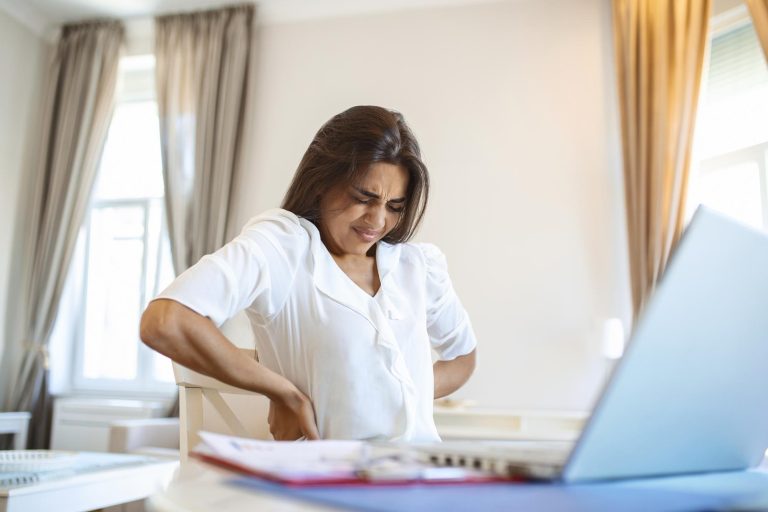Spinal stenosis is a condition that can cause discomfort and limit mobility, affecting your ability to perform daily activities. It’s especially common among older adults and individuals with long-term back problems. If you’re in Warren, Sterling Heights, Madison Heights, Troy, or nearby Michigan cities, the Spinal Recovery Center is here to help. Our comprehensive treatments can alleviate pain and improve your quality of life.
This blog will explore spinal stenosis in detail, including its symptoms, causes, and treatment options.
What Is Spinal Stenosis?
Spinal stenosis occurs when the spaces within the spine narrow, putting pressure on the spinal cord or nerves. This narrowing can happen anywhere along the spine but is most common in the neck (cervical stenosis) and lower back (lumbar stenosis).
The condition is often the result of age-related changes to the spine, but it can also be caused by injuries, medical conditions, or genetics.
Symptoms of Spinal Stenosis
The symptoms of spinal stenosis vary depending on its severity and location. Common signs include:
1. Back Pain
Persistent pain in the lower back or neck is often one of the first symptoms.
2. Numbness or Tingling
You may experience numbness or tingling in your arms, hands, legs, or feet due to nerve compression.
3. Muscle Weakness
Weakness in the limbs can make it difficult to walk or perform daily activities.
4. Difficulty Standing or Walking
In lumbar stenosis, walking or standing for extended periods can worsen symptoms, often requiring frequent rest breaks.
5. Loss of Bladder or Bowel Control
Severe cases of spinal stenosis can lead to a loss of control over bladder or bowel functions, which requires immediate medical attention.
Residents in Madison Heights and Sterling Heights experiencing these symptoms should consult a professional as soon as possible to prevent further complications.
Causes of Spinal Stenosis
Several factors contribute to the narrowing of the spinal canal:
1. Osteoarthritis
Wear and tear on the joints can cause bone spurs, which may compress nerves in the spine.
2. Herniated Discs
Bulging or ruptured discs can press against the spinal cord or nerves, exacerbating stenosis.
3. Thickened Ligaments
Ligaments in the spine can thicken and stiffen over time, narrowing the spinal canal.
4. Spinal Injuries
Trauma from car accidents, falls, or sports injuries—common among active residents in Troy—can lead to spinal stenosis.
5. Congenital Conditions
Some individuals are born with a smaller spinal canal, which increases the risk of stenosis.
Diagnosing Spinal Stenosis
If you suspect spinal stenosis, a healthcare professional will evaluate your medical history, perform a physical exam, and may order diagnostic imaging tests such as:
- X-rays
- MRI scans
- CT scans
These tests help identify the exact location and severity of the narrowing, guiding the treatment plan.
Treatment Options for Spinal Stenosis
The right treatment for spinal stenosis depends on the severity of your symptoms and how the condition affects your daily life. At Spinal Recovery Center in Warren, we offer a variety of non-surgical and minimally invasive treatments to help patients in Sterling Heights, Madison Heights, and nearby areas.
1. Physical Therapy
Physical therapy focuses on strengthening the muscles that support the spine, improving flexibility, and reducing pressure on the nerves. Tailored exercises can also help improve balance and mobility.
2. Chiropractic Care
Chiropractic adjustments realign the spine, relieving nerve pressure and improving function. This approach is especially beneficial for patients experiencing pain and stiffness.
3. Spinal Decompression Therapy
This non-invasive treatment gently stretches the spine, creating space for nerves and reducing pressure caused by stenosis. It’s particularly effective for lumbar stenosis.
4. Massage Therapy
Massage therapy can alleviate muscle tension and improve circulation, providing relief from pain and stiffness.
5. Pain Management
For severe pain, injections such as corticosteroids can reduce inflammation around the affected nerves, offering temporary relief.
Preventing Spinal Stenosis
While you can’t always prevent spinal stenosis, adopting healthy habits can reduce your risk:
- Maintain Good Posture: Proper alignment of the spine can minimize stress on the spinal cord.
- Stay Active: Regular exercise strengthens the back muscles and improves flexibility.
- Protect Your Spine: Use proper lifting techniques and wear supportive footwear.
- Healthy Weight: Maintaining a healthy weight reduces strain on the lower back.
These preventive measures are especially important for residents in Warren and Troy, where active lifestyles and physical work are common.
Why Choose Spinal Recovery Center?
At Spinal Recovery Center, we’re committed to helping patients in Warren, Sterling Heights, Madison Heights, and Troy overcome the challenges of spinal stenosis. Our team of experienced chiropractors, physical therapists, and massage therapists works together to create personalized treatment plans tailored to your needs.
We use state-of-the-art equipment and evidence-based techniques to provide effective relief from symptoms, helping you return to your daily activities.
Contact Us Today
Don’t let spinal stenosis hold you back. Contact Spinal Recovery Center to schedule a consultation:
- Phone: (586) 573-8100
- Location: 28800 Ryan Rd, Warren, MI 48092
- Website: SpinalRecoveryCenter.com
Whether you’re in Warren, Sterling Heights, or a nearby community, we’re here to help you find relief and improve your quality of life. Take the first step toward recovery today!




